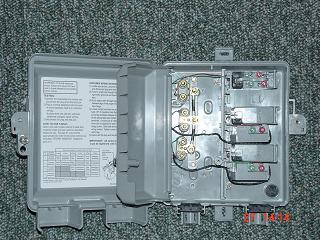DSL Network Guide Chapter 7: The NID

Click to view full picture.
NID stands for Network Interface Device. It is also sometimes called a MPOE, Minimum Point of Entry. All of the phone jacks in your house end up at the NID. The NID box is usually located outside of your house on the side but is sometimes in a closet (usually for businesses) or in a basement. The NID hands off the phone service to the phone lines outside of your house.
The NID box is a good place to go if you fear there may be problems with your DSL service that are inside your house. If you hook up your DSL modem to your NID and you experience no synch, intermittent synch, or slow browsing you can feal secure that it is because of something on the ISPs side. If the problem goes away at the NID then something about the setup inside your house is causing problems. If you determine it's an IW (internal wiring) issue you will probably have to pay your ISP or telco to fix the problem. Some companies will honor linebacker for the IW work but for others linebacker only covers POTS issues.
If you have an issue where the inline filters are not suffice for your setup you may need or want to have a NID spliter installed. The NID splitter takes care of the interference directly at your NID. NID splitters are about $40 and installation is about $60. Prices depend on the company offering the service. From what I've heard I would recommend a Seicor splitter.
One more thing you can do to try and improve your connection is install a homerun. A homerun is a CAT5 cable running from your NID directly to the jack that your DSL modem uses. This helps to eliminate IW issues that can cause synch problems and slow browsing issues.
<-Back Table of Contents Next->

